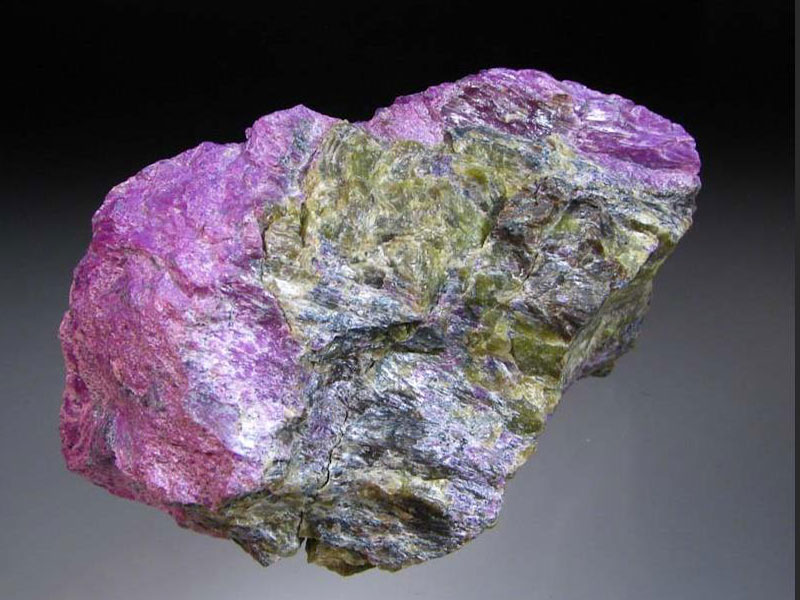The English name of Stichtite comes from Robert Stich, a Romanian mining engineer. it is rarely used for jewelry but only has a collection value because of its low hardness and fragility,
- Chemical formula: Mg6Cr2CO3 (OH) 16 ・ 4H2O, often mixed with iron.
- Trilateral crystal system, the crystals are mostly plate, sheet, and also fiber, scale, and compact block aggregates;
- Beautiful lilac color or rose red;
- Semi-transparent to opaque, waxy luster, grease luster, or pearl luster;
- Uniaxial negative crystal;
- Refractive index: No=1.542~1.550, Ne=1.516~1.520;
- Birefringence: 0.026~0.030;
- Polychromatic, no fluorescence.
- Hardness: 1.5~2,
- Relative density: 2.15 ~ 2.22,
- Cleavage: The cleavage is completely parallel to the bottom.

Basic properties of Stichtite
Chemical composition
The chemical formula of Stichtite is Mg6Cr2 (CO3) (OH) 16 · 4H2O, which is a kind of hydrous magnesium chromium carbonate mineral, and its composition often contains a mixture of Fe.
Morphology
Stichtite belongs to the trigonal crystal system, and the crystal is in the form of plate, sheet, fiber, scale, and compact massive aggregate.
Physical characteristics
Stichtite is lavender or rose, with waxy luster to grease or pearl luster, Translucent to opaque. The uniaxial crystal has negative light properties; the refractive index is No=1.542 ~ 1.550, Ne=1.516 ~ 1.520, the spot measurement is 1.53, and the birefringence is 0.026 ~ 0.030.
It has the dichroism of light rose, deep rose, or lavender, No fluorescence, and Characteristic spectral lines with chromium.
It has a serrated fracture, completely cleaved parallel to the bottom, with the hardness of about 1.5~2 and the density of 2.15~2.22g/cm. It bubbles and dissolves in hydrochloric acid.
Where is Stichtite from?
Stichtite is a hydration decomposition or alteration product of serpentine, which is mainly produced in Tasmania, South Africa, Transvaal, Morocco, Algeria, Quebec Black Lake, and Shetland Islands, Canada.
Conclusion:
Stichtite is attractive for its lavender or rose color, but it can only be processed into girdle-shaped gemstones and jade carving materials due to its translucency.
Stichtite belongs to the trigonal system, which is a hydrous magnesium-chromium-iron carbonate. It is in the form of plate, sheet, and mostly in the form of fine crystals.
Stichtite is lavender or rose color, with the dichroism of pale rose, deep rose, or lavender.
Stichtite is an altered product of serpentine, which is produced in Romania, Transvaal, Morocco, Quebec, and the Shetland Islands.
